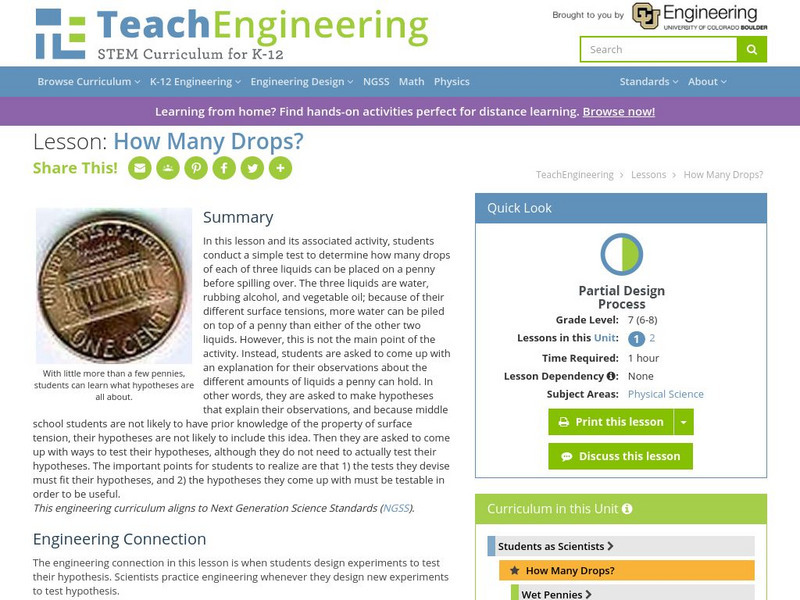In this lesson and its associated activity, students conduct a simple test to determine how many drops of each of three liquids can be placed on a penny before spilling over. The three liquids are water, rubbing alcohol, and vegetable oil; because of their different surface tensions, more water can be piled on top of a penny than either of the other two liquids. However, this is not the main point of the activity. Instead, students are asked to come up with an explanation for their observations about the different amounts of liquids a penny can hold. In other words, they are asked to make hypotheses that explain their observations, and because middle school students are not likely to have prior knowledge of the property of surface tension, their hypotheses are not likely to include this idea. Then they are asked to come up with ways to test their hypotheses, although they do not need to actually test their hypotheses. The important points for students to realize are that 1) the tests they devise must fit their hypotheses, and 2) the hypotheses they come up with must be testable in order to be useful.

